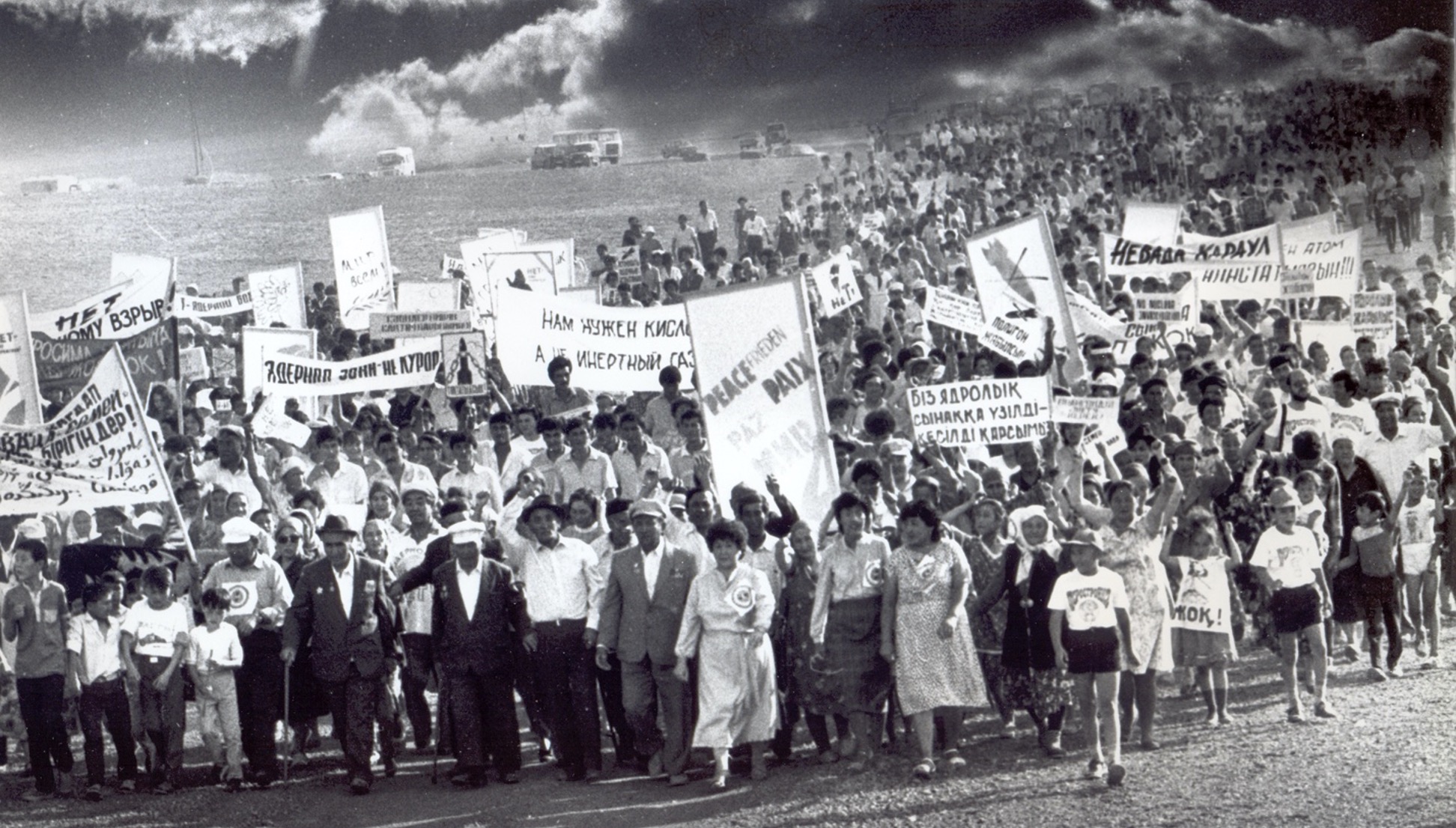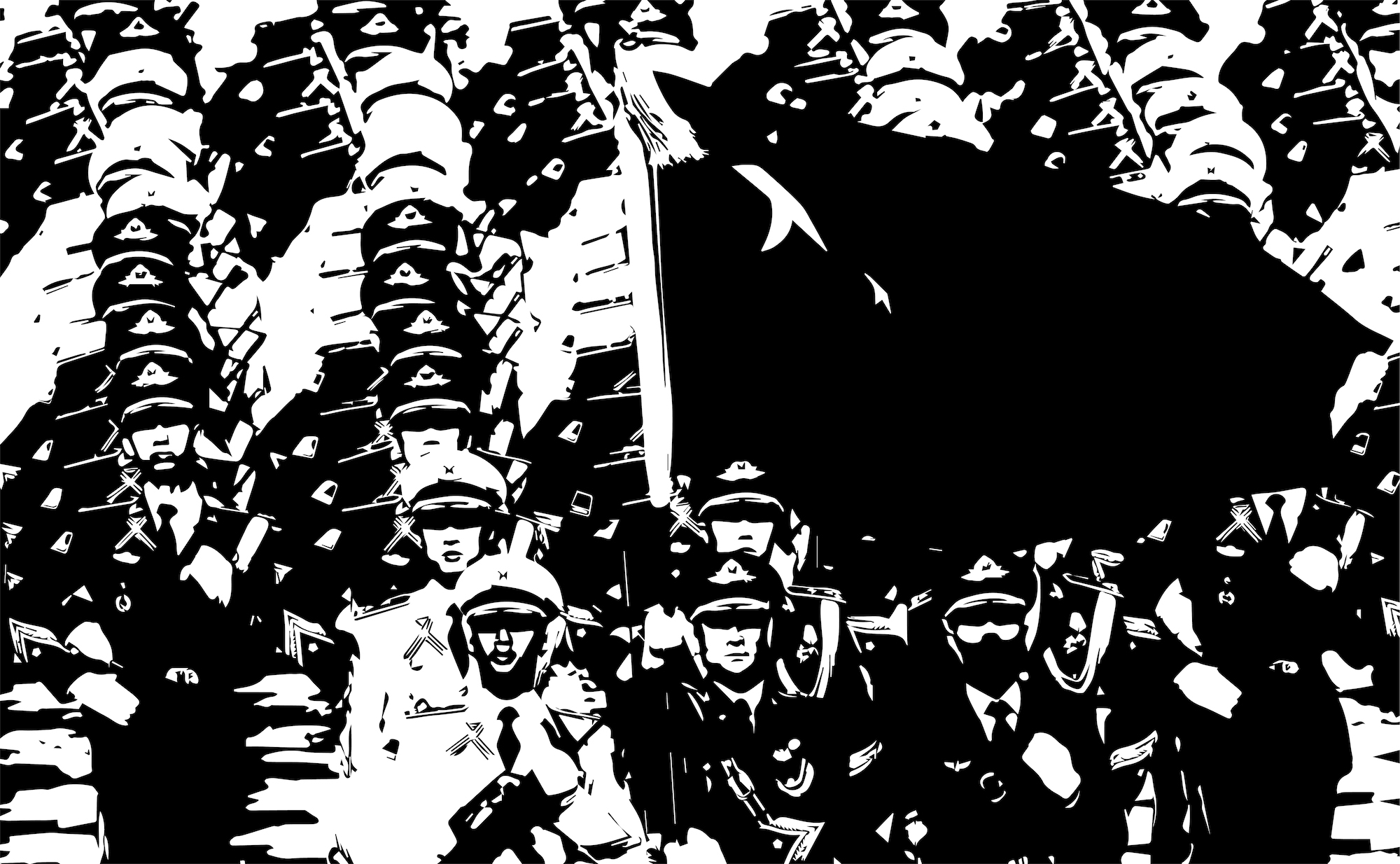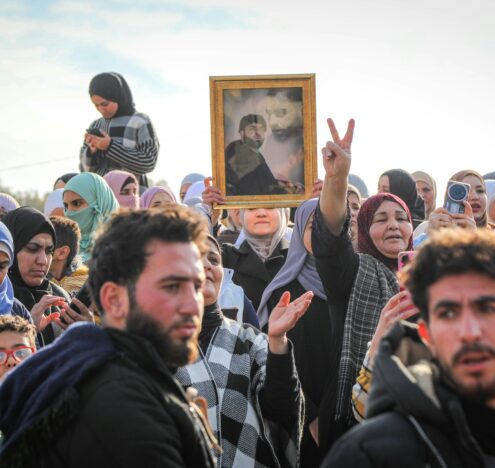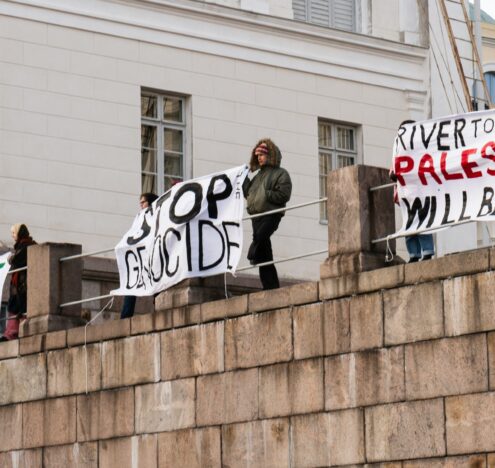We made it. It’s almost over.
2020 has been a tragic year. The coronavirus pandemic has killed over 1.7 million worldwide and over 300,000 people in the United States alone, with the death rate rising. The miraculous news is that within a year, scientists have developed a vaccine that is being administered worldwide, and so far, those who have received it are doing well.
As we count down to the end of the year, Inkstick’s team finds itself reflecting on the good with the bad, and we’re so grateful for your continued support.
The pandemic has highlighted the urgency of ending wars and addressing key issues like human security, climate change, and food insecurity. At Inkstick, we strive to focus on these emerging trends and topics to bring you analyses, expertise, and stories, even, and especially, in such a tough year.
What follows are some of our most popular stories in 2020.
Thank you, as always, for reading. And Happy New Year.

10: The Memeification of International Security
Jamie Withorne
Memes are everywhere. Sometimes — or more times than any of us care to admit — we look for memes because they’re funny. But what do these memes tell us about the public perceptions and awareness of national security policies amongst young people? Jamie Withorne analyzes the memes that hit the internet when Maj. Gen. Qassem Soleimani of Iran’s Islamic Revolutionary Guard Corps’ Quds Force was killed by a US drone in Iraq on January 3. Withorne concludes that Gen Z’s use of constant memes highlights three trends. First, Gen Z is not interested in war but doesn’t quite understand the underlying regional and factual foundation for international conflicts. Second, all of this constant meme-ing has yielded more anxiety than specific action amongst young people. And finally, young people use memes to deflect from the constant barrage of bad news and crises. Ultimately, the memes shouldn’t be ignored because they tell us a lot about the people facing conflict, and may even help us understand the future of conflict.

9: Nuclear Shades of Red Racism
Mariana Budjeryn and Togzhan Kassenova
Racial injustice is not just an American problem but a global one. In this fantastic essay, Mariana Budjeryn and Togzhan Kassenova unveil the racism that lies within the Soviet Union, specifically within the nuclear field. They both write about the Soviet Union’s nuclear history, but being from opposite ends of the Soviet Union (Budjeryn is from Lviv, by the Polish border while Kassenova is from Soviet Kazakhstan, close to the Chinese border), has given each a unique handle on “red” racism. The Soviet regime’s cruelty and disregard for human life is well known now, but Soviet racism is less known. The Soviet system may have praised internationalism but arranged its empire in a hierarchy that was blatantly racist that ultimately impacted where nuclear tests could take place as the Soviet Union developed its nuclear program. Combating racism is important — but that can’t start without locating it first and studying its permutations.

8: Island Utopia
Catherine Chou
Taiwan has handled the COVID-19 pandemic better than any other country. Why isn’t the World Health Organization (WHO) giving Taiwan any credit for its domestic accomplishments? It’s no surprise that China is involved but Catherine Chou explains how Taiwan can serve as a global example of mutual care and coordination in spite of Chinese pressure to keep it on the outskirts of the international community. In other words, Taiwan can lead the way as the world reorganizes itself in the post-COVID-19 world.

7: This Isn’t the First Time US Soldiers Have Faced Bounties
Edward Salo
In June, news broke of Russian intelligence operatives offering bounties to the Taliban to kill US soldiers. While the Trump administration labeled the story as “fake news,” politicians on both sides raised questions about why these bounties were ignored. In this article, Edward Salo tells us two important things. First, this is not the first time that bounties have been placed on American military personnel — it happened in the 1970s during the Vietnam War and in the 2000s in Iraq. Second, and more importantly, the bounties were ignored each time. Salo argues that ignoring bounties is not a feasible strategy, especially since American forces are stationed all over the world.

6: It’s Time To Rethink Our Wargames
Christopher Dougherty
Wargames have become increasingly popular for preparing for various crises like the ongoing pandemic. Designing a wargame, however, is challenging. Christopher Dougherty explains how wargames have become echo chambers that lack sufficient diversity or adequate connections to the levers of policy. But if the wargaming community embraces people and their stories, wargames can serve as a unique and very effective preparedness tool.

5: The Myth of Chinese Strategic Genius
Peter T. Charles
Is China a strategic genius? The events along the China-India border that resulted in China killing 20 Indian soldiers this summer not only indicate a changing shift in China’s relationship with India but also point to a more important development: changes within China’s strategic thinking. According to Peter Charles, the tale of Chinese strategic genius is a widespread fiction. In this article, he explains how China’s regional and international diplomacy has helped develop this narrative. But a series of recent strategic failures may reveal the myth of Chinese strategic genius sooner than anyone anticipated — especially the Chinese.

4: I Want UwU for US Army
Kate Kohn
The US military relies on recruitment but the ongoing pandemic has made it hard to set up tables inside malls and educational institutions. So instead, the military has turned to digital recruiting — and is using video games to target young people. In 2018, the Army created US Army Esports, a team that uses video game culture to attract recruits. In this excellent article, Kate Kohn lays out the US military’s online recruitment strategy and how it romanticizes war. Kohn argues that the best way to combat this propaganda is to be engaged in your communities and families and resist these new recruitment efforts so that our young don’t get shipped off to fight endless wars.

3: The Cult of Mediocrity
Capt. Murphy Parke
What is “the cult of mediocrity”? In order to understand that, it’s important to understand “institutionalized mediocrity,” which means supporting a system that prioritizes the status quo and an institution that strives for relevance rather than excellence. Capt. Murphy Parke (a pseudonym) explains how it is advantageous for some commanders to turn a blind eye than address transgressions or failures to meet standards or regulations. Parke criticizes those who place politics over duty but in an optimistic turn tells his fellow Air Force servicemembers that they must stay in the USAF to hold the line against institutionalized mediocrity and toxic leadership.

2: I Watched 5 Pandemic Movies so You Don’t Have To
Rob Levinson
Who hasn’t watched a lot of Netflix since the pandemic began earlier this year? Some, like Rob Levinson, decided that it would be exciting to watch movies about pandemics while living through a pandemic. Levinson learned two lessons after watching these movies. First, when doctors and first responders were prepared, things went better (go figure). And second, there is a great deal of similarity between decisions in war and decisions in a pandemic. Read the article to find out which movies he watched!

1: Budget Cuts Have Made The US Less Ready for Coronavirus
Linda J. Bilmes
In February, the Trump administration declared a public health emergency and governors across the country imposed a combination of quarantines, stay-at-home orders, and travel restrictions. Linda Bilmes explains how none of those measures were enough. The reason: for the past three years, the Trump administration has weakened global health agencies and US offices in charge of preparing for and preventing this kind of crisis. Even though various vaccines are now here and are being administered, Bilmes’ call for allocating more resources to research, detect, and prevent pandemics remains relevant, and should not be ignored.































